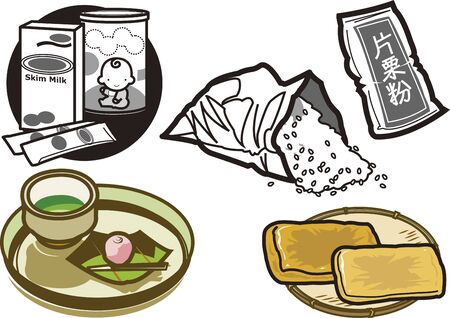Understanding Caloric Needs for Backpacking
When planning for a long-distance backpacking trip, understanding your caloric needs is crucial to maintaining energy and stamina on the trail. Unlike regular daily activities, backpacking—especially over multiple days or weeks—requires significantly more energy as you’re constantly moving, often carrying a heavy pack, and exposed to varying weather conditions. Your calorie requirements can easily double or even triple compared to your sedentary lifestyle at home.
Factors That Affect Energy Needs
Several factors influence how many calories you’ll burn each day on a trek. The terrain you’re traversing, the weight of your backpack, your pace, and even the altitude all contribute to how much energy you expend. Personal factors such as age, gender, body size, and metabolism also play a role. For example, hiking steep inclines with a loaded pack in cold weather will demand far more calories than walking flat trails in mild temperatures.
Calculating Your Caloric Intake
To estimate your caloric needs, start with your Basal Metabolic Rate (BMR)—the calories your body burns at rest—and add the extra energy required for hiking. A common rule of thumb among American backpackers is to aim for 3,000 to 5,000 calories per day during long treks. Heavier packs or longer days can push this number higher. There are online calculators specifically designed for hikers that take into account your weight, distance covered per day, elevation gain, and other key factors.
Planning Ahead
It’s important not just to hit the right calorie numbers but also to balance macronutrients for sustained energy release. In the following sections, we’ll cover how to choose foods that are lightweight yet calorie-dense, strategies for meal planning on the trail, and tips to keep your energy up throughout your adventure.
Choosing Lightweight, High-Energy Foods
When it comes to backpacking nutrition and food planning for long treks, selecting foods that are both lightweight and packed with calories is essential. Every ounce in your pack counts, so you want to maximize your energy intake without weighing yourself down. Here are some practical tips and popular choices among American hikers.
Tips for Picking the Right Backpacking Foods
- Go for Calorie Density: Look for foods that offer a high number of calories per ounce. This means more fuel for your body without extra weight.
- Prioritize Protein and Healthy Fats: Nuts, seeds, and nut butters are excellent sources of sustained energy and help keep you feeling full longer.
- Choose Dehydrated or Freeze-Dried Options: Removing water weight makes meals lighter and easier to pack, plus they rehydrate quickly at camp.
- Avoid Bulky Packaging: Repackage snacks and meals into resealable bags to save space and reduce trash.
- Consider Preparation Time: Opt for foods that require minimal cooking or can be eaten on the go.
Popular Backpacking Food Staples in the U.S.
| Food Item | Calories per Ounce | Why It’s Popular |
|---|---|---|
| Peanut Butter | ~170 | Tasty, versatile, high in protein and healthy fats |
| Tortillas | ~80-100 | Packs flat, great base for wraps or spreads |
| Nuts & Trail Mix | ~160-180 | No prep required, long shelf life, calorie-dense |
| Instant Oatmeal Packets | ~100-120 | Lightweight breakfast option, easy to prepare with hot water |
| Dried Fruit | ~80-90 | Naturally sweet, provides quick energy and nutrients |
| Freeze-Dried Meals | ~110-130 (per serving) | No refrigeration needed, just add hot water for a full meal |
| Couscous/Instant Rice | ~100-110 | Cooks quickly, pairs well with various seasonings or proteins |
| Cured Meats (Jerky) | ~110-130 | Packed with protein, shelf-stable snack option |
| Candy Bars/Energy Bars | ~120-140+ | Satisfies sweet tooth while providing quick carbs and fats |
| Coffee Singles/Tea Bags | N/A (low calorie) | Mental boost to start the day or warm up during breaks |
Packing Smart: A Quick Checklist for Food Selection
- Diversify Your Menu: Mix up flavors and textures to prevent palate fatigue on the trail.
- Aim for Balance: Include carbohydrates, protein, and fats in every meal for steady energy.
- Treat Yourself: Bring a few comfort items like chocolate or instant soup—these little luxuries can lift your spirits on tough days.
The Takeaway:
The key to successful backpacking nutrition is choosing foods that deliver maximum calories, nutrition, and flavor with minimum weight. By incorporating these tips and tried-and-true staples into your food plan, you’ll stay fueled and focused for every mile of your long trek.

3. Meal Planning and Prep Before Your Hike
Proper meal planning and preparation are critical to a successful backpacking trip, especially when youre out for several days or even weeks. Start by estimating how many days youll be on the trail and then break down your nutrition needs into daily calorie requirements based on your body weight, activity level, and environmental conditions. For most backpackers, 2,500–4,500 calories per day is a good range to target, but you may need more in colder weather or on strenuous routes.
How to Plan Balanced Meals
A balanced backpacking diet should include carbohydrates for quick energy, protein for muscle repair, and healthy fats for sustained fuel. Try to include a mix of all three macronutrients at each meal. For example, combine instant oatmeal (carbs), nut butter (fat), and dried fruit (carbs and micronutrients) for breakfast. Lunch could be tortillas with tuna packets (protein) and cheese (fat), while dinner might feature dehydrated chili with beans (protein/carbs) and olive oil (fat) stirred in.
Sample Meal Plans
Here’s a basic sample for one day:
- Breakfast: Instant oats with powdered milk, nuts, and raisins
- Lunch: Whole wheat wraps with peanut butter and honey; beef jerky on the side
- Dinner: Dehydrated pasta primavera with added olive oil; instant pudding for dessert
- Snacks: Trail mix, energy bars, dried fruit, and electrolyte drink mix
Prepping Food in Advance
To streamline your trek and lighten your load, prepare as much as you can before hitting the trail. Pre-portion meals into resealable bags labeled by day or meal. Consider dehydrating your own meals at home to save money and customize flavors—think homemade chili, stews, or pasta sauces. If you’re going on a longer trek where resupply isn’t possible, mail yourself food drops along your route if permitted. Don’t forget to test new meals at home so you know what cooks well in your camp stove and keeps you satisfied after a long day’s hike.
4. Cooking and Eating on the Trail
Best Practices for Backcountry Cooking
Cooking in the American backcountry is all about simplicity, efficiency, and safety. Always cook at least 200 feet away from your campsite and water sources to minimize wildlife encounters and protect the environment. Stick to established fire rings or use a portable stove—open fires are often prohibited due to wildfire risk. Plan meals that require minimal prep and cleanup, and practice Leave No Trace principles by packing out all trash, including food scraps.
Recommended Lightweight Cooking Gear
Choosing the right gear can make meal prep quick and easy without weighing down your pack. Here’s a comparison of popular lightweight options:
| Gear Type | Weight (oz) | Best For | Notes |
|---|---|---|---|
| Canister Stove (e.g., Jetboil, MSR PocketRocket) | 2-14 | Quick Boiling | Fast, reliable; fuel canisters not always recyclable |
| Alcohol Stove | 1-4 | Ultralight Backpacking | Simple design; slower cook time |
| Steripen/UV Purifier | <5 | Water Purification | No chemicals or filters needed; requires batteries |
Other Essential Items
- Titanium pot or mug (lightweight, durable)
- Spork (multi-use utensil)
- Small cutting board or knife (for fresh ingredients)
Food Safety Advice in the American Wilderness
The American wilderness presents unique food safety challenges due to wildlife like bears and rodents, as well as variable temperatures. Always store your food in bear-proof containers or hang it at least 10 feet off the ground and 4 feet from tree trunks. Keep raw foods separate from ready-to-eat items to prevent cross-contamination. When possible, boil water for at least one minute or use approved purification methods. Remember to wash hands with biodegradable soap away from natural water sources to avoid contamination.
5. Managing Special Diets and Allergies
If you have dietary restrictions or food allergies, backpacking nutrition requires extra planning—but it’s totally doable. With more Americans embracing gluten-free, vegetarian, vegan, or nut-free diets, the outdoor food market now offers plenty of trek-friendly options.
Gluten-Free Choices
Gluten-free trekkers can look for dehydrated meals from brands like Mountain House, Good To-Go, and Backpacker’s Pantry, all offering certified gluten-free choices. For trail snacks, rice cakes, KIND bars (check labels), jerky made without soy sauce, and plain nuts are safe bets. Don’t forget gluten-free instant oatmeal or granola for breakfast.
Vegetarian and Vegan Options
Vegetarian and vegan trekkers have lots of ready-made meal pouches to choose from—try brands like MaryJanesFarm, Patagonia Provisions, or LYO Expedition for plant-based chili, pasta, or curry. DIY hikers can pack dehydrated beans, lentils, couscous (for vegetarians), instant rice, dried veggies, and nut butters (if not allergic). Trail mixes with seeds and dried fruit are great energy boosters.
Nut-Free Solutions
Nuts are common in backpacking foods, but there are alternatives: sunbutter (made from sunflower seeds), pumpkin seed butter, and roasted chickpeas all provide protein without the allergy risk. Look for allergy-friendly snack brands like MadeGood or Enjoy Life. Always double-check ingredients—even “nut-free” products may be processed in facilities that handle nuts.
Pro Tips for Safe Eating on the Trail
- Pre-pack meals at home to control ingredients and prevent cross-contamination.
- Read every label—even familiar products sometimes change recipes.
- If eating with a group, communicate your needs clearly and consider packing your own cookware.
- Carry an EpiPen or antihistamines if you have severe allergies.
Planning Ahead Pays Off
With a bit of research and smart shopping at US stores like REI or Whole Foods, you’ll find plenty of safe and tasty backpacking foods—so you can focus on enjoying your adventure instead of worrying about what’s in your next meal.
6. Resupplying and Food Storage in the Backcountry
One of the most crucial aspects of food planning for long treks is figuring out how to resupply and safely store your food in the backcountry. American thru-hikers, especially on famous trails like the Appalachian Trail (AT), Pacific Crest Trail (PCT), and Continental Divide Trail (CDT), have developed tried-and-true strategies for managing food drops, resupply points, and bear-proofing their provisions.
Managing Food Drops and Resupply Points
On extended hikes, it’s nearly impossible to carry all the food you’ll need from start to finish. Most hikers rely on a combination of pre-arranged food drops and in-town resupply stops. Many popular trails have designated post offices or hostels along the route where hikers can mail themselves resupply boxes filled with dehydrated meals, snacks, and specialty items they can’t buy locally. Planning these drops requires researching distances between towns, average hiking pace, and what supplies are available at each stop. In trail towns, hikers often “shop the shelves,” stocking up at local grocery stores or convenience marts on staples like tortillas, peanut butter, ramen noodles, and jerky.
Bear-Proofing and Safe Food Storage Techniques
Keeping your food safe from wildlife isn’t just about not losing your dinner—it’s also essential for protecting bears and other animals from becoming habituated to human food. In many areas of the US, especially in national parks and wilderness areas, proper food storage is mandatory. Thru-hikers commonly use bear canisters or bear bags (such as Ursacks) to secure their provisions. Bear canisters are hard-sided containers that bears cannot open; while they add weight and bulk to your pack, they’re required in some regions like California’s Sierra Nevada. Alternatively, hanging your food using the “PCT method” involves suspending your bear bag 10-15 feet above ground and 4-6 feet away from any trunk or branch, making it difficult for bears to reach.
Other Wildlife Considerations
Bears aren’t the only concern—rodents, raccoons, and even birds can be persistent thieves. Some hikers bring odor-proof bags or double-bag their supplies to minimize scents that attract critters. In high-use campsites with communal bear lockers or poles, always use them instead of risking a DIY system that might fail.
Final Tips for Efficient Resupply and Safe Storage
Successful resupplying on a long trek means balancing nutrition with pack weight and availability. Always plan ahead by checking trail forums for current conditions at resupply points and storage regulations in each area. Be flexible—sometimes stores run out of hiker staples or regulations change suddenly due to increased bear activity. By mastering food drops, shopping smartly in trail towns, and diligently practicing wildlife-safe storage techniques, you’ll keep both yourself and the backcountry safe while staying fueled for every mile ahead.


